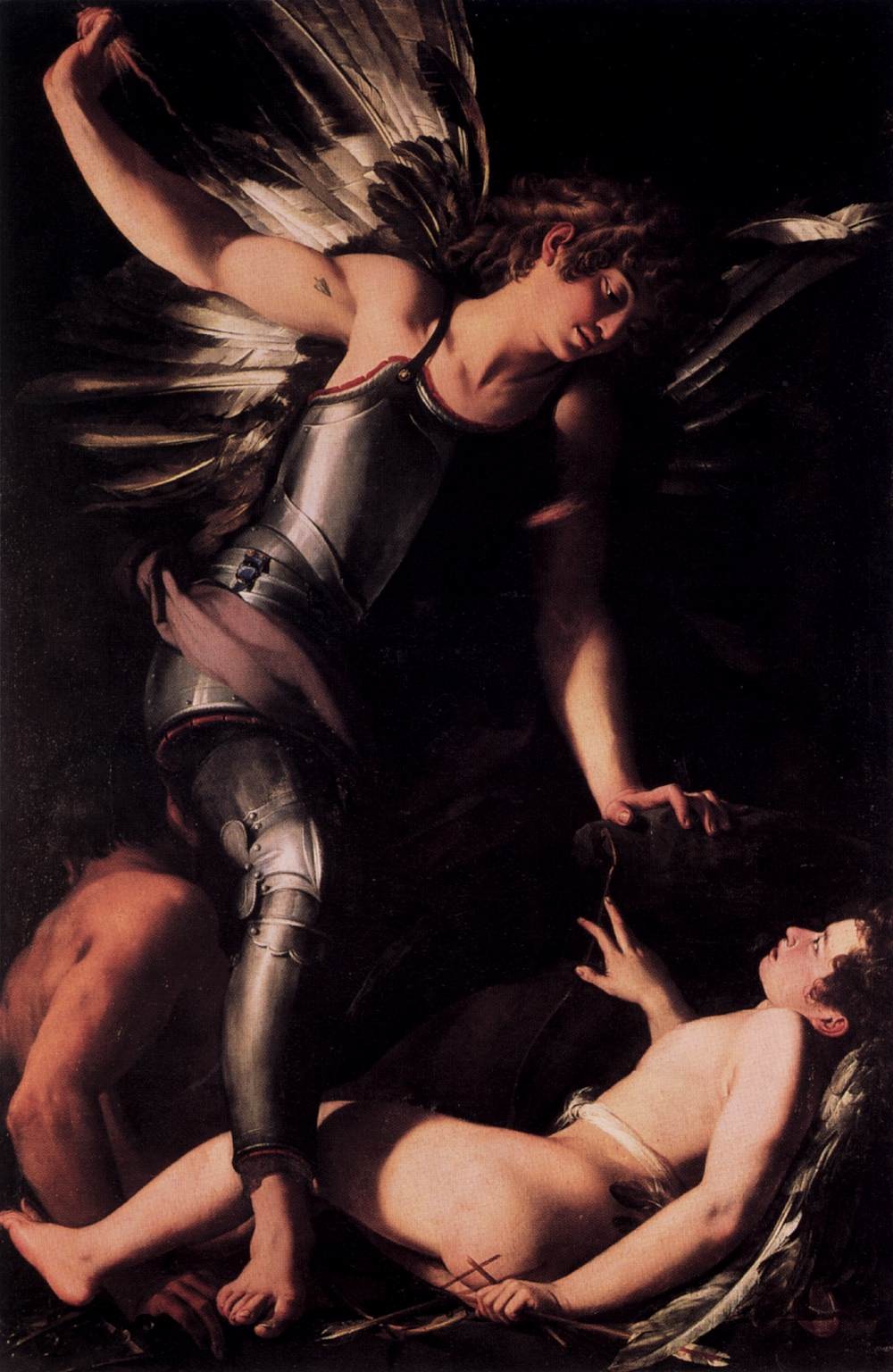Caravaggio, You Devil!
If Rome can't get enough of Caravaggio, you certainly can't expect me to. In fact, there's a disgraceful lack of Caravaggio in the contents of this blog. I'm going to start remedying that right now.
The Rome in the time of Caravaggio exhibit was set to end last weekend, but as I happily announced last week, it has been extended through mid-March! If you want to go to a Caravaggio exhibit, let me warn you right now, it isn't one! But it's still full of wonderful works of art, and beautifully curated, so I recommend it nonetheless.
One of my favorite aspects of this exhibit was that most of the works, instead of simply hanging on the wall at eye level, have been inserted into replica altars, with faux marble and porphyry, because almost all of them are part of altarpieces. There has been some criticism that the works are displayed too high off the ground, but they were meant to be seen this way in the churches they were painted for, so in my opinion it works.
One of over 100 paintings on display is Giovanni Baglione's Sacred Love Conquering Profane Love. Actually, it's not this one below. This is his first version of the same subject. Baglione was one of the most enthusiastic followers of Caravaggio's innovative new style of naturalism plus chiaroscuro, a style that was bursting onto the Roman scene in the first years of the 1600s. Problem was, Caravaggio didn't like people copying his style. Apparently he didn't agree with the adage that the greatest form of admiration is imitation.
According to Peter Robb (whose book M: The Man who Became Caravaggio I am currently absorbed in), this painting was greatly inspired by, even a challenge to, Caravaggio's most celebrated and notorious work of the moment, Love Victorious (pictured above), albeit a completely different take on the subject of love. In fact, Baglione's divine love was seen as a kind of antithesis to Caravaggio's shocking earthly love.
Here you see sacred love in full armour, breaking up what appears to be a tryst between profane love and the devil himself. Robb describes it as "a sanctimonious courtier's appeal to the counter reformation properties," adding that "on this level at least, it worked brilliantly." When the work was enthusiastically received by the cardinal who had commissioned it --and Baglione generously rewarded for his work-- Caravaggio was understandably miffed. According to Robb, Caravaggio considered Baglione's painting "at once cheaply derivative and smugly critical of his own most daring work." The fact that Caravaggio was having his paintings rejected right and left because he refused to censor his own art to pander to the church couldn't have helped matters.
But as frustrated as Caravaggio must have been, Baglione's next painting was even more insulting. Baglione had been criticized for depicting sacred love in full armour, so he reworked the painting with two major differences: he changed the angel's outfit to what Robb describes as "a hideously fancy and fussy girdle" but more provocatively, the devil is no longer turning his head in defeat, but looking straight out at the viewer with the unmistakable features of Caravaggio himself. (The second version is the one that appears in this exhibit.)
Considering the conspicuous position of these two would-be lovers, and the fact that Caravaggio's recent Love Victorious had been modelled by his well-known boy-toy Cecco Boneri, with this work Baglione was attempting to smear Caravaggio's already fragile reputation with the stain of sodomy.
Below you can see the clear resemblance of Caravaggio's most famous self-portrait, painted ten years prior, with Baglione's devil version of Caravaggioabove.
If you think Caravaggio took this insult lying down, you don't know art history's favorite bad boy very well. Caravaggio and a couple of his friends retaliated by writing a couple of virulent and vulgar poems that offended Giovanni Baglione so gravely that he took them all to court for slander. Caravaggio ended up serving a few weeks in the Tor di Nona prison followed by a lengthy house arrest. Only his high connections saved him from being sent to the galleys.
Peter Robb recounts this and many more of Caravaggio's exploits in his engrossing book (along with vivid descriptions of all his works) so I highly recommend you pick it up. (It has recently be rereleased with the new title M: The Caravaggio Enigma.) You will also find both of the comic and insulting poems, which I would love to post here, but I'm waiting until I can find the original Italian versions. Let me just say that the first one is called Gian Coglione.




